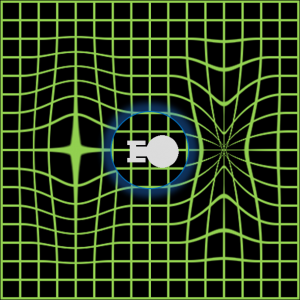A complaint often made about SF is how little science actually features in it, and that’s something difficult to deny, especially looking at some famous movies. I’m not referring here to things like teleportation, FTL travel, Death Star-like weapons or lightsabers. Spectacular as they might appear, they are not pure fantasy and unworthy of hard SF. These marvels are, believe it or not, among those classified by the astrophysicist Michiu Kaku as impossibilities of the Class I type, i.e., not violating the laws of physics and therefore achievable in a not-so-near future. Even FTL (Faster-than-Light) travel is only apparently impossible. In the modality “warp drive” – the one used in Star Trek, just to mention a famous example – the actual speed will be subluminal at all times, thus possible according to Einstein’s relativity and to our current vision of cosmology, where nothing can travel faster than light.

NASA believes in its (at least theoretical) feasibility so much that got serious plans about developing working prototypes, such as the amazing IXS Enterprise, the warp ship designed by Mark Rademaker and Harold White. Good, because given the existing distances within the Oort Cloud – the space just outside the Solar System – with the existing spaceships we won’t go anywhere and be back in time to talk about it.

More challenging – at least for the suspension of disbelief all fiction requires, SF included – are other things that routinely appear in movies and to a lesser extent in books. And these ones indeed violate any kind of physics laws of the universe as we know it. They are not just impossible (for now); they’re unlikely. This video shows a few of them, some more disturbing than others. Take gravity, for example. Gravity, one of the four fundamental forces in nature, is a complex mechanism affecting motion and characteristics of all celestial bodies, and that determines facts quite important for a SF scenario. The amount of energy required to take off, for instance; and surface gravity, i.e., if you can walk on a planet or not. Not sure why, it is often assumed in movies that exoplanets all enjoy Earth’s gravity. The issue itself is not even raised. Let alone other considerations, this would be in reality statistically rare, and it would constitute the exception rather than the rule. The last time (May 2014) I have checked existing records, there were about 1106 planetary systems in the catalogue, 1786 planets and 460 multiple planet systems. Most of them are way bigger than our blue planet, being them puffy planets, Jupiter-like gas giants or simply super-Earths. But you bet, gravity over there would be different from Earth – making a lot of scenarios really implausible.

It’s a pity: the existing exoplanets are so interesting that some of them deserve to be protagonists of SF stories, and their peculiar gravity would be an intriguing feature. In the following weeks I am going to write about these newly discovered worlds. If the IXS Enterprise warp-ship turns out to be operational anytime soon, we may end up visiting them, after all. Epsilon Eridani, the nearest one, is just 10.3 light-years away. In warp-ship time we could get there in 5 weeks or so. Let’s get ready, just in case.
(Note: anybody serious about understanding interstellar travel should have a look at the paper of Miguel Alcubierre, “The Warp Drive: Hyper-Fast Travel Within General Relativity”, published in 1994 on Class. Quantum Grav. 11-5, L73-L77 and available online. Even though some passages may remain rather obscure to anybody without a PhD in astrophysics, it’s well worth the effort.)











2 Comments